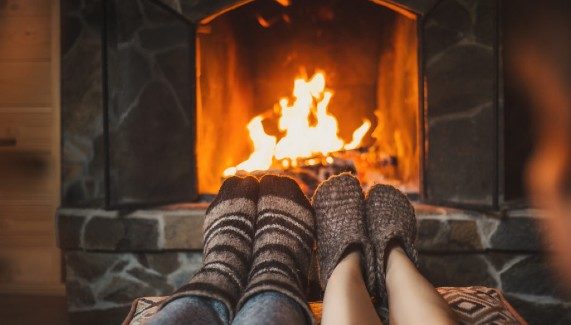Fall is an excellent time to start thinking about getting your home ready for winter weather. Winterizing Your Home will reduce energy consumption, keep you warmer, extend the life of your home’s systems, eliminate safety hazards, and save money during the winter months. Here are ten ways to winterize your Texas home.
1. Inspect your home’s heating and air conditioning system
Before the weather turns cold, have your HVAC system inspected by a reputable HVAC contractor. Regularly servicing your furnace helps you catch problems before expensive breakdowns, prolong the furnace’s life, and keep it running more efficiently.
Chariot Tip: Did you know that you can use 100% green energy in your home without installing solar panels at rates competitive with regular electricity?
2. Flush & insulate your water tank
Be sure that your water heater is working well. These should be flushed twice a year and preferably before winter begins so that they are ready to be used. Save on fuel by wrapping the water heater in a blanket of insulation and setting the temperature to 120 degrees.
Chariot tip: Did you know that a tankless water heater can provide money and energy savings as well as shut down when not in use after winter is over.
3. Check the seal on exterior wood
The exterior wood trim on your home needs to be protected from the elements. Replacing rotted trim can get costly. A yearly inspection can prevent expensive repairs. Make sure that the caulk is not cracked, and your paint is not chipped or flaking away. If it is, scrape away the bad paint and old caulk, apply new caulk and a fresh coat of paint.
4. Do a quick energy audit and check for air leaks
Fall is also an excellent time to consider a professional energy audit and to inspect your door and window seals. Hold a candle in front of possible drafts. If the flame wavers, you have an air leak. Seal a leaking door by installing foam or felt weatherstripping inside the doorframe. If you don’t have double pane windows, covering your windows with plastic is an inexpensive way to seal out drafts.
5. Insulate hot water pipes
Exposed pipes waste heat by cooling off the water running through them. Insulate the hot water pipes in your basement or crawl space by snapping foam sleeves on them.
6. Make sure your safety detectors are working
Most house fires happen in winter. Test all of your smoke detectors to make sure they are working and that they have good batteries. If your home does not have carbon monoxide detectors, consider getting some.
7. Clean your chimney
Get your fireplace cleaned and inspected before you start building those cozy fires. A chimney sweep company will make sure the fireplace is safe to use, and it can also identify maintenance problems. Heated or cooled air rises and escapes when you leave the fireplace damper open. When the fireplace is not in use, shut the flue.
8. Clean out your gutters
Once the leaves are off the trees, it’s time to clean the gutters. Gutters can back up and overflow, and when they overflow, that water runs down your home, speeding up the deterioration of your exterior. If channels are blocked and the weather gets freezing, water will turn into ice and add weight to the gutters, which could cause them to tear away from the house.
9. Prepare your outdoor water pipes
Dealing with a burst water pipe is every homeowner’s fear. Make sure your sprinkler system is properly shut down for the season. Your outside water faucet is unprotected from the elements. It will freeze over in winter and could flood the basement. Disconnect outdoor hoses and shut the water valve off to your outside spigot, then go outside, open the exterior spigot valve and let the water drain out of the line.
10. Clear dead trees and branches
Before all of the leaves fall, take a look at your trees and make sure they’re still healthy, especially trees that could fall on your home or a neighbor’s home. If there are branches up against your house, it’s a good idea to trim them away before winter, so you don’t have ice-coated branches against your siding or windows.
10. Consider switching energy companies for the best Winter electricity rates
Ee fundamentally believe that the right energy company can make all the difference in your electricity bill. If you’re actively taking steps to reduce your energy usage and you’re not seeing results, you need a new plan or a new energy company. Here’s our guide on how to shop for electricity in Texas that makes it easy for you to decide and take that next step.


